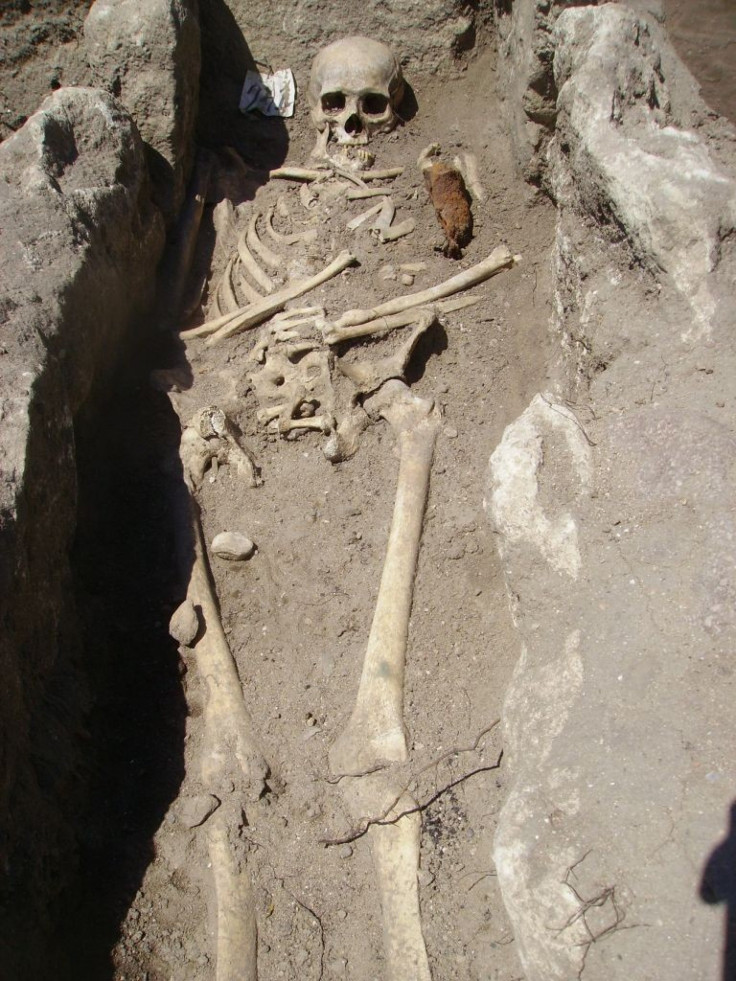Vampire Tourism? Skeletons In Bulgaria Boost Visitor Interest

The discovery of vampire skeletons in the Black Sea town of Sozopol made headlines across the globe and now the local Bulgarian media reports that tourism officials believe the frenzy can pump more blood into the nation's growing tourism industry.
Bulgaria led the European Union last year in the increase in hotel occupancy by foreigners, with numbers up nearly 20% over the previous year.
The two recently discovered medieval skeletons, which are pierced through the chest with iron rods to supposedly prevent them from turning into vampires, may help boost numbers even more in 2012.
Local headlines about vampire skeletons quickly turned into vampire vacations with tour operators fielding inquiries from Germans and Brits about planning trips to the town of Sozopol, the Bulgarian Standard daily reports.
The Sofia News Agency claims that people are lining up at the excavation site at the monastery of St. Nicolas the Wonderworker.
The discovery demonstrates a pagan practice common in several villages across the Balkans up to a century ago where those seen as dangerous had their hearts stabbed after death for fear they would return to feast on human blood, historians say.
These skeletons stabbed with rods illustrate a practice which was common in some Bulgarian villages up until the first decade of the 20th Century, Bozhidar Dimitrov, who heads the National History Museum in the Bulgarian capital Sofia, said in a statement to reporters.
According to Dimitrov, there have been around 100 known vampire skeleton burials and the people buried were all male and frequently aristocrats and clerics.
Archaeologist Petar Balabanov discovered six nailed-down skeletons at another Bulgarian site in Debelt in 2004. He claims the practice was common in neighboring Serbia as well.
Vampire legends are thought to have originated from the disturbing appearance of decomposing bodies during the plagues that ravaged Europe in the Middle Ages. The legends play a major role in the Balkan region's folklore and were the basis for Bram Stoker's classic tale, Dracula, which was first published in 1897. The story has been retold in numerous filmic versions and forms the basis for modern vampire fiction.
© Copyright IBTimes 2024. All rights reserved.












